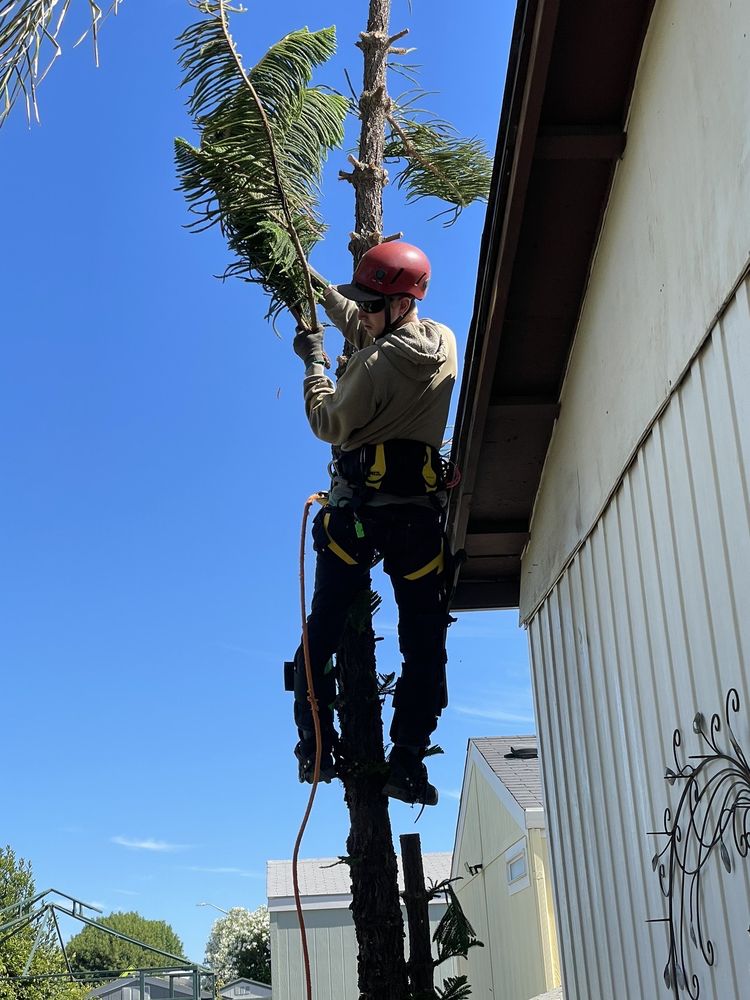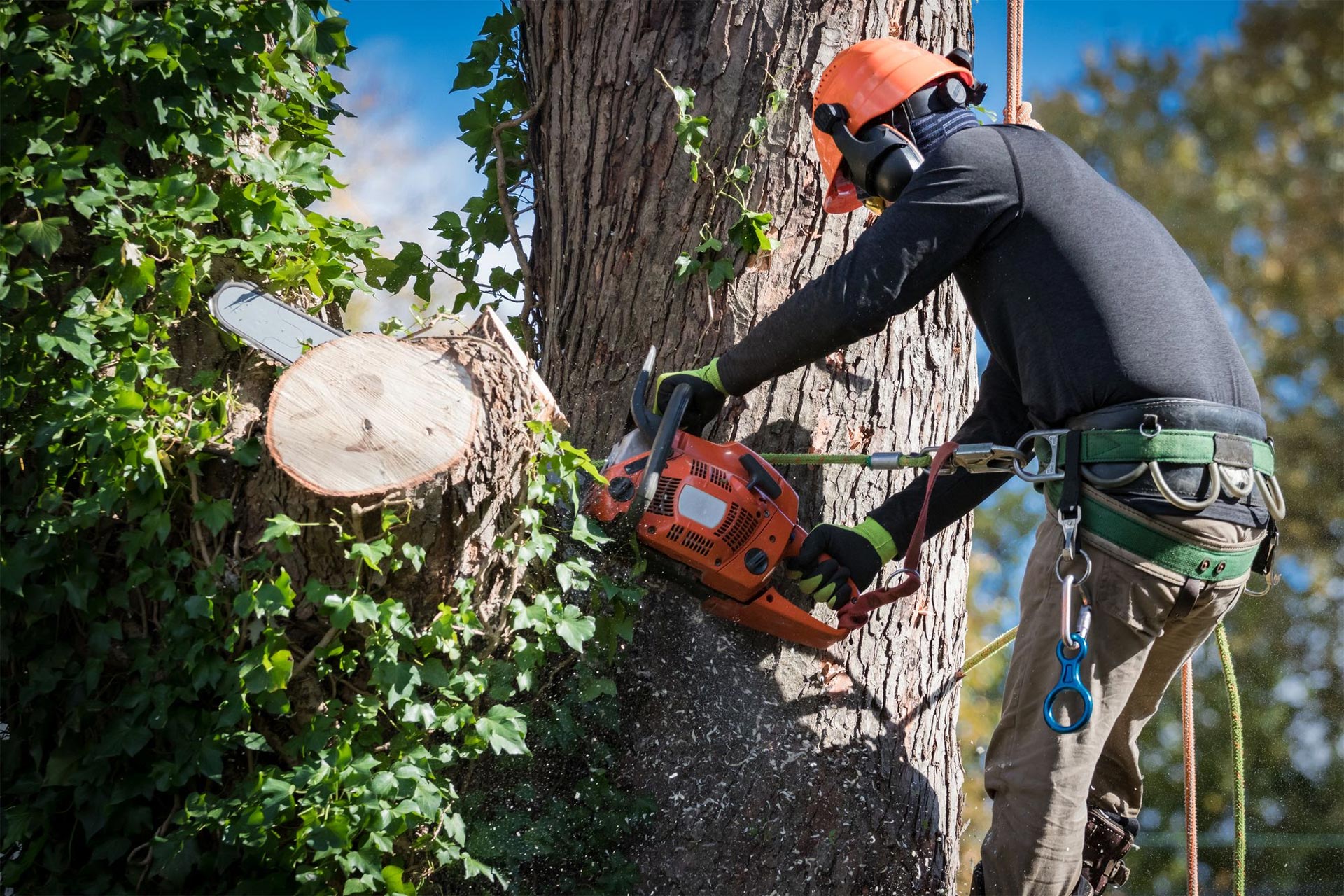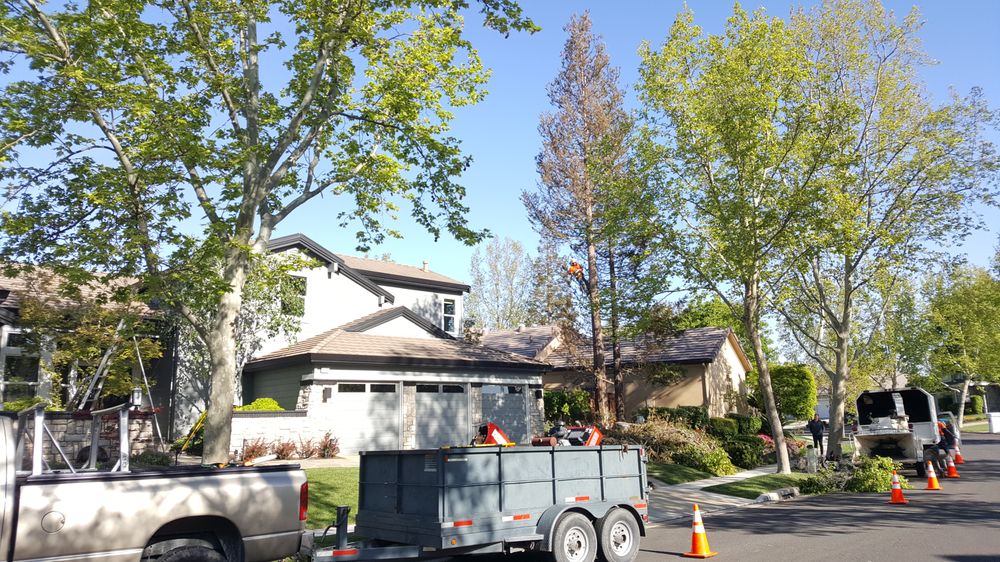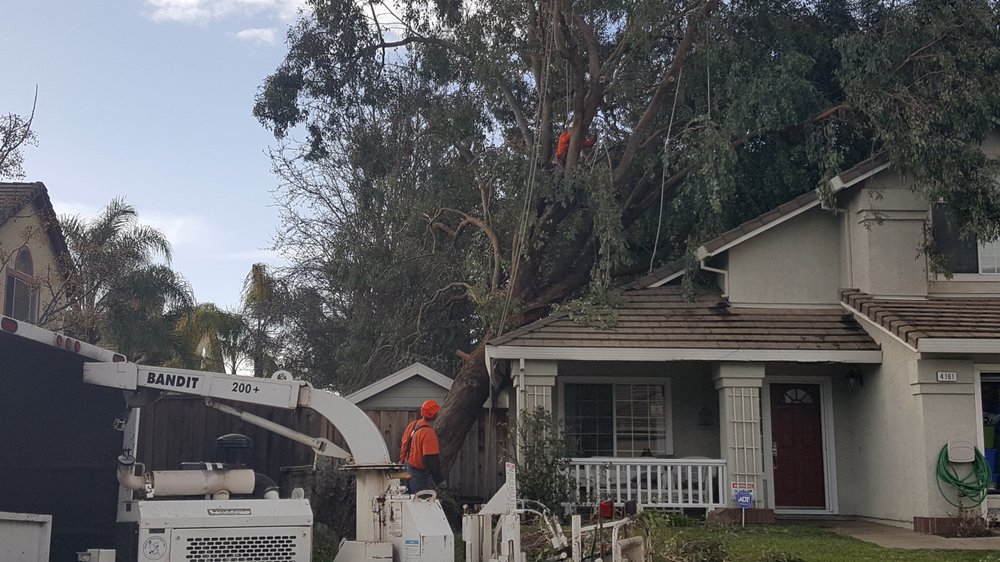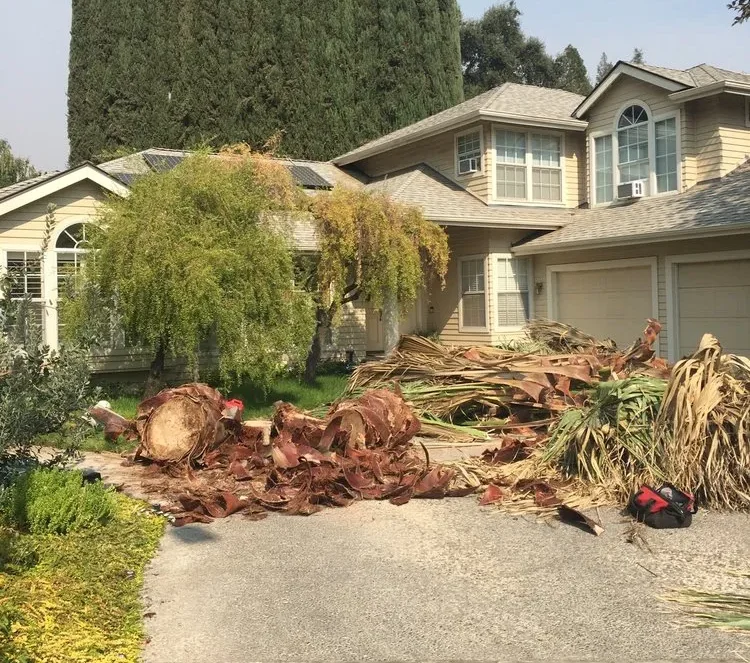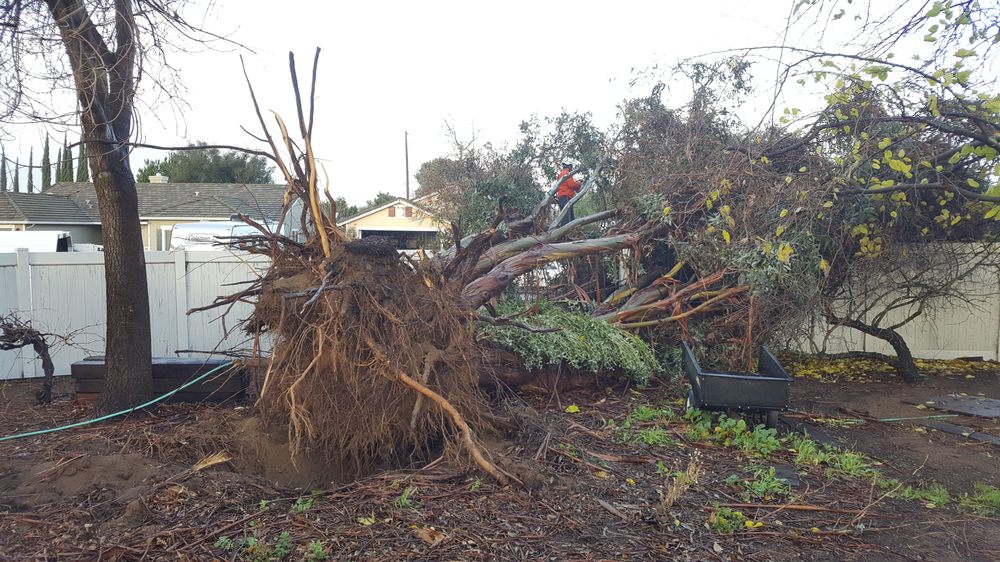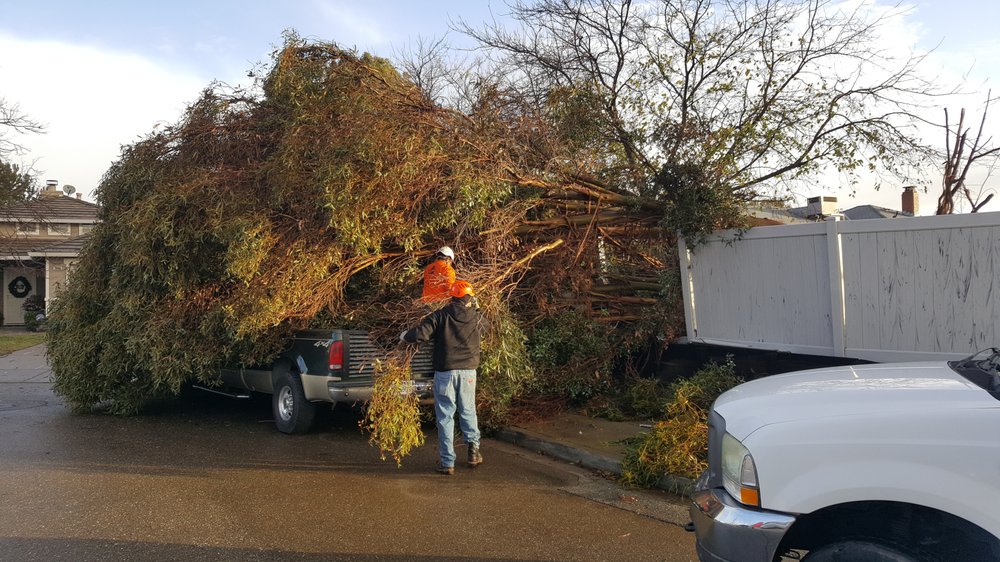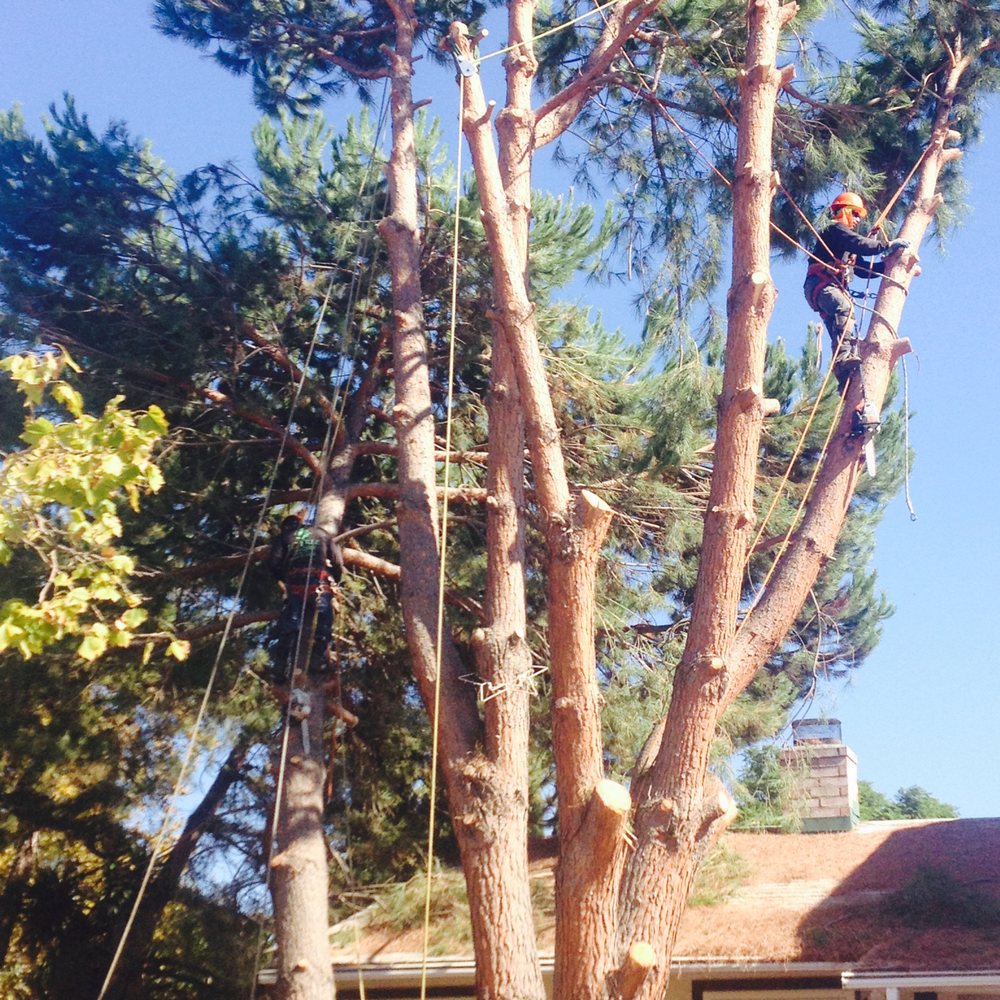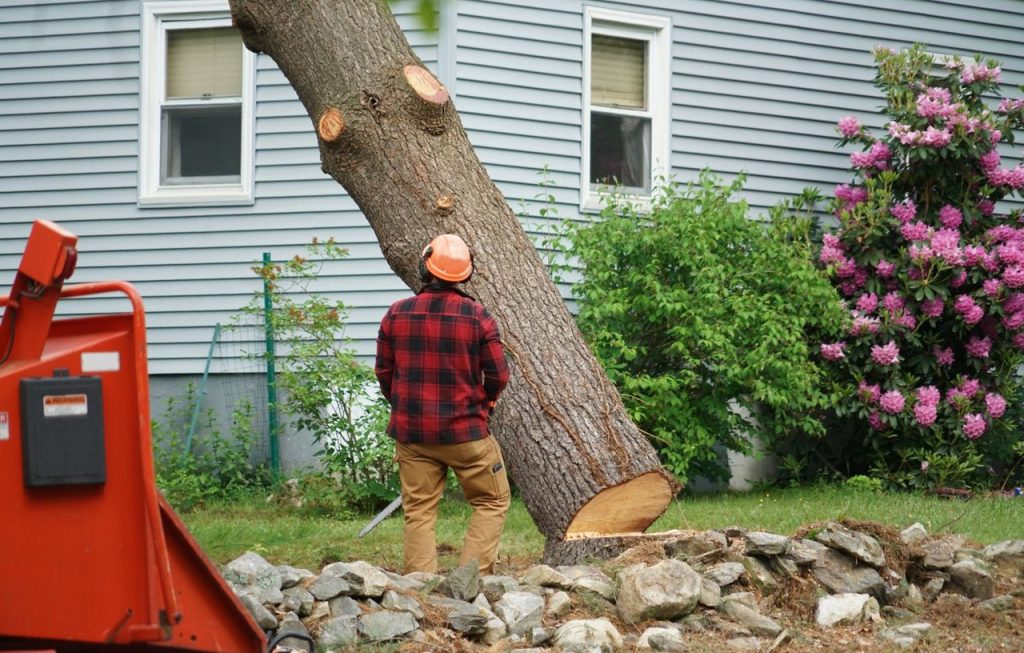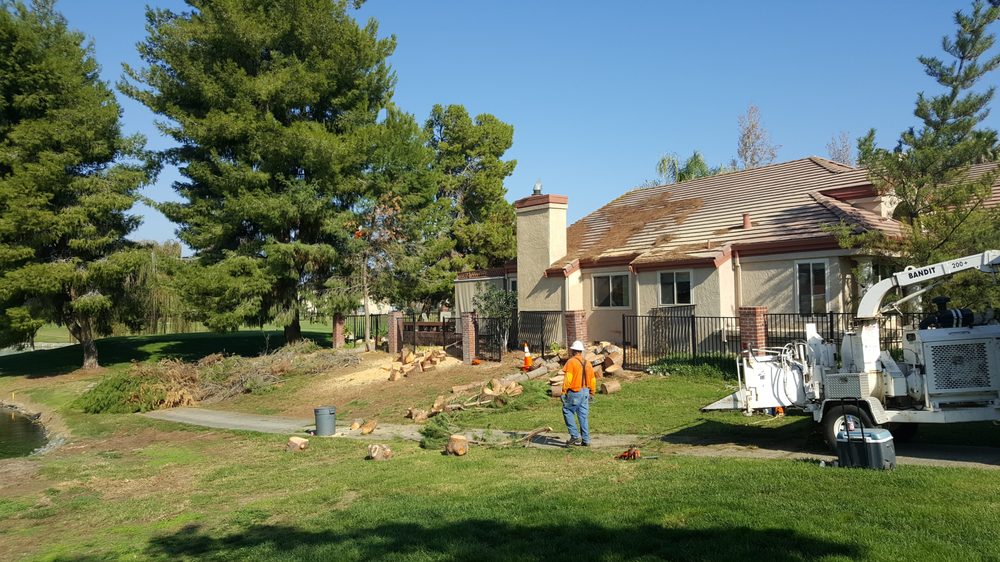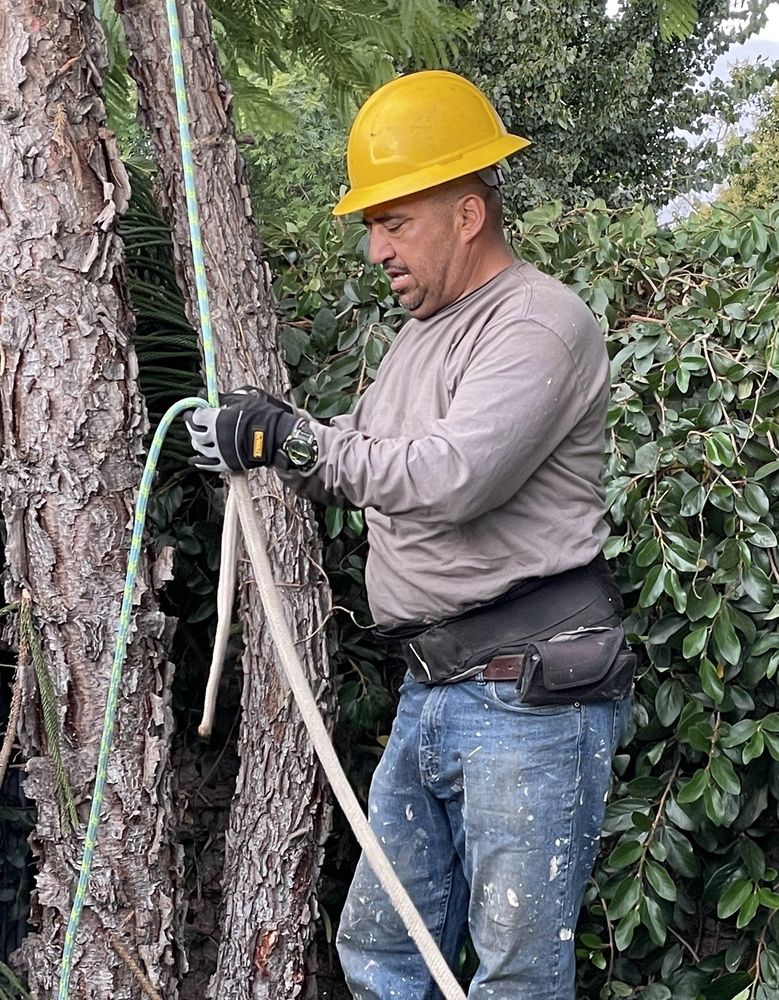Ever wondered how arborist tree removal can transform your landscaping game by clearing the stump and creating a new way to the ground? Discover expert tips straight from the pros to elevate your outdoor space. Uncover the secrets to enhancing curb appeal, creating functional layouts, ensuring safety, and proper planning in your landscape design. Learn how strategic tree removal can open up possibilities for new plantings, improved lighting, and increased property value. Ready to take your landscaping skills to the next level? Dive into our guide for invaluable insights on the role of tree removal in achieving a picture-perfect outdoor oasis.
Understanding Tree Services in Landscaping
Tree Services Overview
Tree services play a crucial role in landscaping projects, offering a range of benefits. These services include tree removal, pruning, stump grinding, and tree planting. Each service is tailored to enhance the overall appearance and health of the outdoor space.
Tree removal is essential for eliminating dead, diseased, or unwanted trees that may pose safety hazards or detract from the landscape’s beauty. Professional arborists assess the tree’s condition and use specialized equipment to safely remove it without causing damage to surrounding structures or plants.
Enhancing Outdoor Spaces
Tree services contribute significantly to enhancing outdoor spaces by creating a well-manicured and visually appealing environment. Proper pruning helps maintain the trees’ health, shape, and size, promoting healthy growth and longevity. Pruning can improve sunlight penetration and air circulation within the landscape.
Stump grinding is another vital tree service that involves removing tree stumps after tree removal. This process not only eliminates tripping hazards but also improves the aesthetics of the landscape by creating a smooth, level surface. By getting rid of unsightly stumps, the overall visual appeal of the outdoor area is enhanced.
Aesthetics in Landscaping
In landscaping, aesthetics are paramount, and tree services play a key role in achieving visually pleasing outdoor spaces. Trees are essential elements that add beauty, texture, and dimension to landscapes. Properly maintained trees with regular pruning and care enhance curb appeal and create a harmonious balance between hardscape features and greenery.
Pros:
- Enhances overall appearance of outdoor spaces
- Promotes healthy growth and longevity of trees
- Improves safety by eliminating hazardous trees
Cons:
- Can be costly depending on the extent of services required
- Improper tree removal or pruning techniques can harm trees
Significance of Tree Maintenance
Safety and Health
Regular tree maintenance is crucial for ensuring the safety of your property and the well-being of its inhabitants. Trimming and pruning trees prevent overgrowth, reducing the risk of falling branches during storms.
Trees that are not properly cared for can become diseased or infested with pests, posing a threat to the surrounding vegetation. By maintaining trees regularly, you can detect and address any issues early on, preventing the spread of diseases and preserving the overall health of your landscape.
Improperly maintained trees can also obstruct visibility on roads or paths, increasing the likelihood of accidents. By keeping trees well-maintained, you create a safer environment for both pedestrians and drivers.
Environmental Preservation
Proper tree care plays a significant role in environmental preservation. Trees are essential for absorbing carbon dioxide and producing oxygen through photosynthesis. Maintaining healthy trees helps combat climate change by reducing greenhouse gases in the atmosphere.
Furthermore, trees provide habitats for various wildlife species, contributing to biodiversity conservation. By caring for trees in your landscape, you support ecosystems and promote a healthier environment for plants and animals to thrive.
In addition to their ecological benefits, trees help mitigate urban heat islands by providing shade and cooling effects. Proper tree maintenance ensures that these cooling benefits are maximized, creating more comfortable outdoor spaces during hot weather.
Property Value and Aesthetics
Investing in tree maintenance can significantly enhance the value and visual appeal of your property. Well-maintained trees improve curb appeal, making your property more attractive to potential buyers or visitors.
Healthy trees can increase property value by up to 20%, according to the Arbor Day Foundation. Regular pruning and trimming help shape trees into aesthetically pleasing forms, enhancing the overall look of your landscape.
Moreover, strategically placed trees can provide privacy screening, noise reduction, and windbreaks on your property. By maintaining these trees properly, you can optimize their functionality while adding beauty to your outdoor space.
Techniques for Tree Pruning
Crown Thinning
Crown thinning is a technique used by arborists to selectively remove branches within the crown of a tree. By eliminating excess branches, the tree’s canopy becomes less dense, allowing more sunlight and air to penetrate through. This process not only enhances the tree’s aesthetic appeal but also promotes better air circulation and reduces the risk of disease.
Pruning shears are commonly used during crown thinning to carefully trim smaller branches, while larger branches may require pruning saws or chainsaws. Arborists follow specific guidelines to ensure that no more than 25% of the live foliage is removed in a single pruning session. Over-pruning can stress the tree and lead to health issues, so it’s crucial to approach crown thinning with precision.
Crown Cleaning
Crown cleaning involves the removal of dead, diseased, or weak branches from a tree’s canopy. This technique focuses on improving the overall health of the tree by eliminating any limbs that could potentially pose a hazard. Dead branches not only detract from the tree’s appearance but also serve as entry points for pests and diseases.
During crown cleaning, arborists inspect the entire canopy for damaged branches and carefully prune them using appropriate tools. Removing these branches allows the tree to allocate resources more efficiently towards healthy growth. Regular inspections for signs of decay or damage can help prevent safety hazards and prolong the tree’s lifespan.
Crown Reduction and Raising
Crown reduction is a pruning method that involves decreasing the overall size of a tree’s canopy by selectively cutting back branches. This technique is often employed to alleviate stress on large limbs or reduce shading in certain areas. By reducing the size of the crown, arborists can shape the tree while maintaining its structural integrity.
On the other hand, crown raising focuses on elevating the lower branches of a tree to increase clearance beneath its canopy. This practice is beneficial for improving visibility, enhancing pedestrian access, and preventing obstructions along pathways or roadsides. Both crown reduction and raising techniques contribute to tree health by promoting balanced growth patterns.
Vista Pruning
Vista pruning is a specialized technique used to create strategic openings in a tree’s canopy that frame desirable views in landscaping settings. By carefully trimming specific branches, arborists can enhance sightlines towards scenic vistas or architectural focal points. Vista pruning not only adds visual interest but also maximizes natural light exposure in outdoor spaces.
When executed correctly, vista pruning can transform an ordinary landscape into a picturesque setting that showcases both nature and man-made elements harmoniously. This practice requires careful planning and precise cuts to achieve desired visual effects without compromising tree stability or health.
Tips for Tree Planting
Site Preparation
To ensure successful tree planting, start by clearing the area of any debris, rocks, or tree stumps. This step is crucial as it creates a clean canvas for the new tree to thrive. Adequate sunlight and space are essential for healthy growth.
Properly preparing the site also involves assessing the soil quality. Conduct a soil test to determine its pH levels and nutrient content. Based on the results, amend the soil with organic matter like compost to provide necessary nutrients for the young tree’s development.
Soil Amendment and Obstacle Removal
Soil amendment plays a vital role in promoting optimal tree growth. By enriching the soil with nutrients, you create a fertile environment that supports root establishment and overall health. Ensure proper drainage to prevent waterlogging, which can lead to root rot.
Removing obstacles such as large rocks or tree stumps is equally important. These barriers can impede root growth and cause structural issues later on. Clearing the site of obstacles ensures that the tree has ample space to spread its roots and access essential resources.
Planting Techniques
When it comes to planting techniques, follow these steps for the best results:
- Dig a hole twice as wide but no deeper than the root ball.
- Gently loosen the roots before placing the tree in the hole.
- Position the tree at ground level, ensuring that the root flare is visible above the soil.
- Backfill with soil, tamping lightly to remove air pockets.
- Water thoroughly after planting to help settle the soil around the roots.
Proper planting depth is crucial; planting too deep can suffocate roots, while planting too shallow exposes them to potential damage. By following these guidelines, you set your newly planted tree up for success from day one.
Effective Tree Removal Methods
Reasons for Tree Removal
Tree removal in landscaping is essential for various reasons. Overgrown trees can pose safety hazards during storms, risking property damage and personal injury. Diseased trees can spread infections to other plants, affecting the overall landscape health.
When a tree becomes structurally unsound, it may be at risk of falling unexpectedly, endangering nearby structures and inhabitants. In such cases, tree removal becomes crucial to prevent accidents and maintain a safe environment.
Stump Removal Process
After tree removal, addressing the remaining stumps is vital for effective site preparation. Stumps not only detract from the aesthetic appeal of the landscape but also hinder future development plans. Stump grinding is a common method used by professionals to eliminate stumps efficiently.
By grinding the stump into mulch, it allows for seamless integration back into the soil, promoting healthy growth for new plantings. Removing stumps prevents potential hazards like tripping or damage to lawn equipment during landscaping activities.
Importance of Professional Assistance
Seeking assistance from a reputable tree removal company is paramount for ensuring safe and effective tree removal. Professionals possess the necessary expertise and equipment to handle tree removal tasks efficiently while prioritizing safety measures.
Professional arborists are trained to assess trees accurately, determining the best course of action for removal based on factors like tree health, location, and size. Their experience minimizes risks associated with tree removal, safeguarding both property and individuals.
Choosing Trees for Replacement
Tree Selection
When choosing trees to replace the ones removed, consider their health and potential to thrive in the landscape. Look for species that are resilient and suited to the local climate.
Replacement trees should be carefully selected based on their ability to withstand various environmental conditions such as temperature, soil type, and available sunlight. Consider factors like growth rate and mature size to ensure they fit well within the space.
To minimize the risk of future issues, opt for trees that are less prone to diseases and pests. Research different species’ susceptibility to common problems and choose those with a track record of minimal damage over time.
Site Conditions
Before making a final decision, evaluate the site conditions where the new trees will be planted. Take into account factors like soil quality, drainage patterns, and proximity to buildings or utilities.
Ensure that the replacement trees are compatible with the existing landscape design. Consider aspects such as color, texture, and seasonal interest to create a cohesive look that enhances the overall aesthetic appeal of the property.
When planting near structures or walkways, choose trees with non-invasive root systems to prevent potential damage over time. Factor in maintenance requirements such as pruning needs and watering frequency based on site-specific conditions.
Landscape Integration
Matching replacement trees to the surrounding landscape is crucial for achieving a harmonious look. Consider the existing vegetation, including shrubs and flowers, to create a balanced composition that complements the overall design.
Integrating new trees seamlessly into the landscape involves considering their growth habits and visual impact throughout the year. Select species that offer seasonal interest through features like colorful foliage or attractive blooms.

Managing Disease and Pests in Trees
Common Issues
Tree owners often face challenges with infestations and diseases that can harm their trees. Arborists encounter various cases where pests and diseases threaten tree health.
Pests like aphids, beetles, and caterpillars can damage trees by feeding on leaves and bark. Diseases such as Dutch elm disease and oak wilt can spread quickly among trees, leading to severe damage or death if left untreated.
Early Detection Tips
Regularly inspecting trees for signs of pests or diseases is crucial for early detection. Look for symptoms like wilting leaves, unusual spots, or holes in the trunk. Prompt identification allows for quick treatment to prevent further damage.
If you notice any abnormalities in your trees’ appearance, consult with a certified arborist to diagnose the issue accurately. Quick action can save the tree from irreversible damage caused by pests or diseases.
Importance of Prevention
Implementing preventive measures is key to maintaining healthy trees in landscaping. Proper tree care practices such as regular pruning, mulching, and watering can strengthen tree immunity against pests and diseases.
Applying organic pesticides or insecticidal soaps can help control pest populations without harming beneficial insects. Planting native tree species resistant to common diseases reduces the risk of infestations.
Advantages of Professional Tree Services
Safety and Efficiency
Professional tree removal services ensure safety by employing trained experts who understand the risks involved in tree maintenance. They use specialized equipment to carry out tasks efficiently and safely, minimizing any potential damage.
Hiring professionals for tree care can prevent accidents that may occur when untrained individuals attempt to remove trees. Their expertise in handling various tree species enables them to assess the situation accurately and choose the most suitable approach for each tree.
The use of advanced tools such as cranes, chainsaws, and protective gear by professional tree removal companies enhances their ability to perform tasks with precision. This not only ensures the safety of their team but also protects your property from any potential harm.
Quality Results
When engaging professional tree services, you can expect high-quality results that meet industry standards. Their experience in dealing with different types of trees allows them to provide tailored solutions based on the specific needs of your landscaping project.
By entrusting your tree care needs to professionals, you can rest assured that the job will be completed with precision and attention to detail. Their knowledge of proper pruning techniques and safe removal methods guarantees that your trees will be maintained in a way that promotes their health and longevity.
Moreover, professional tree removal companies have the expertise to identify signs of disease or infestation early on. This proactive approach can help prevent further spread of pests or diseases within your landscape, ultimately saving you time and money in the long run.
Environmental Conservation
Professional tree services play a vital role in environmental conservation by promoting sustainable practices in tree management. They adhere to guidelines that prioritize the health of trees and ecosystems while carrying out their services.
Through proper trimming, pruning, and selective removal, professionals can enhance the overall aesthetics of your landscape without compromising the environment. By maintaining a balance between preservation and removal, they contribute to the sustainability of green spaces.
Professional tree removal companies often engage in recycling programs where they repurpose wood chips and other byproducts for various purposes. This eco-friendly approach demonstrates their commitment to reducing waste and minimizing the environmental impact of their operations.
Achieving a Healthy Landscape
Tree Maintenance
Maintaining trees through proper planning and regular care is essential for a thriving landscape. Pruning dead branches, ensuring adequate watering, and monitoring for pests are crucial steps.
Trees should be planted strategically to enhance the environment and provide shade. Regularly inspecting trees for signs of disease or stress can help prevent potential issues.
Planting and Replacement
When planting trees, consider the safety aspects such as proximity to buildings or power lines. Properly selecting tree species that suit the ground conditions ensures their longevity.
In cases where tree removal is necessary due to damage or disease, timely replacement is vital. Replacing removed trees with suitable species maintains the balance and aesthetics of the landscape.
Sustainable Practices
The impact of tree removal on the environment should be minimized by following sustainable practices. Recycling tree debris and using it as mulch benefits the soil health in the surrounding area.
Professional arborists employ advanced equipment and techniques to minimize damage during tree removal. This expertise ensures a smooth process with minimal disruption to the property.
Final Remarks
You’ve now gained a comprehensive understanding of tree services in landscaping, from maintenance to removal. By implementing the tips shared by the pros, you can ensure your trees thrive and contribute to a healthy landscape. Remember, proper tree care not only enhances the aesthetic appeal of your outdoor space but also promotes environmental sustainability.
Incorporate these expert techniques into your landscaping routine to create a vibrant and well-maintained outdoor environment. Don’t hesitate to seek professional tree services when needed to address complex issues effectively. Your commitment to tree health will not only benefit your property but also contribute to the overall well-being of the ecosystem.
Transform Your Landscape with JC Tree Service’s Expert Tree Removal
If tree-related issues are impacting your home or business, JC Tree Service is equipped to provide expert solutions. Whether it’s unsightly trees affecting your property’s visual charm or potential hazards posing a risk to safety, our specialized team manages it all. We offer precise tree removal, alongside comprehensive pruning and landscaping services, serving Brentwood, Antioch, and surrounding areas.
We understand the crucial roles of aesthetics and safety in tree care, hence we commit to delivering top-tier services tailored to your needs. Tree removal is vital not only for enhancing your property’s appearance but also for maintaining the safety of your surroundings. Effective tree removal helps prevent disease spread, reduces the risk of falling branches, and promotes a healthy environment. With JC Tree Service, you can be confident that your landscape is in the hands of professionals dedicated to keeping your outdoor spaces both beautiful and safe.
Don’t let tree issues detract from the beauty and security of your surroundings. Contact JC Tree Service today to explore how our tree removal and additional services can transform your property. We offer a free, no-obligation quote to get you started. Experience the impact of professional tree care!
Disclaimer
The materials available on this website are for informational and entertainment purposes only and not to provide legal or professional advice. You should contact your attorney or home improvement specialist to obtain advice concerning any particular issue or problem. You should not act or refrain from acting based on any content included in this site without seeking legal or other professional advice. The information presented on this website may not reflect the most current home improvement developments. No action should be taken in reliance on the information on this website. We disclaim all liability concerning actions taken or not taken based on any or all of the contents of this site to the fullest extent permitted by law.

